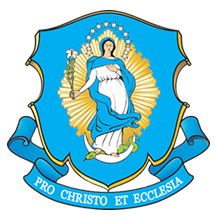
Saint Damien de Veuster's grave on the island of Molokai, Hawaii (Wikicommons).
“I make myself a leper with the lepers to gain all to Jesus Christ," Fr. Damien said, crediting the Eucharist and Holy Mass with sustaining him.
Welcome to "North American Sanctity," a new series on holy men and women, boys and girls, saints and those on the road to sainthood, from Canada, the United States, and Mexico. Some will be familiar, others less so; but all are inspiring!
By Kimberly Bruce
He “gave his life for the ransom of many” (Mk 10:45). This verse describes our Lord Jesus Christ, of course, but could also well be said of St. Damien de Veuster of Molokai (feast day: May 10), a priest who served on the leper colony of Molokai in the Hawaiian Islands during the 19th century.
Speaking at his canonization in 2009, Pope Benedict XVI said St. Damien’s missionary activity “reached its peak in charity” when “the servant of the Word consequently became a suffering servant, a leper with the lepers” serving those “abandoned by all.”
Belgium by birth
Born Jan. 3, 1840, Joseph de Veuster was the youngest of seven children in his farming family in Tremelo, Belgium. He entered the Congregation of the Sacred Hearts of Jesus and Mary when he was 18 and took the name “Damien” in remembrance of the fourth-century martyr.
When Damien’s brother, Pamphile, a priest in the same congregation, took sick and was unable to fulfill his planned mission to go to the Island of Molokai to minister and attend to the lepers there, Damien offered to go in his stead.
The Hawaiian Islands had been virtually quarantined since Polynesian explorers settled there in the eighth century. Consequently, they had no immunity to the diseases of outsiders who began arriving from the 1700s onward. (From the outset of these encounters, Hawaii was under a monarchy, and did not become a U.S. state until 1959).
Of all the diseases that arrived, leprosy was the worst. The government’s only recourse was to quarantine those with the disease on its Island of Molokai, on the remote Kalaupapa Peninsula. This land became one of lawlessness, debauchery, and hopelessness. The bodies of the dead were even thrown into shallow graves, where animals rampaged their flesh.
In 1873, a Hawaiian politician wrote, “If a noble Christian priest, preacher or Sister should be inspired to go and sacrifice a life to console these poor wretches, that would be a royal soul to shine forever on a throne reared by human love.”
Damien arrived in Honolulu that same year, was ordained a priest, and went to Molokai hoping to remain permanently.
The work of mercy
One of the first things Fr. Damien knew he needed to do was work to give the inhabitants back their dignity and worth as human beings. To accomplish this, he had to start by providing proper burials for the dead.
He found himself deeply living the Corporal Works of Mercy:
• Feed the hungry
• Give drink to the thirsty
• Clothe the naked
• Shelter the homeless
• Visit the prisoners
• Comfort the sick
• Bury the dead
Initially very cautious about the physical contact he had with the lepers, Fr. Damien knew he needed to be like Christ and touch them. He placed the host on their tongues; anointed their foreheads with sacred oil; ate with them; bandaged their wounds; etc.
“I make myself a leper with the lepers to gain all to Jesus Christ," he said, crediting the Eucharist and Holy Mass with sustaining him.
Light and salt
During Fr. Damien's years on Molokai, morale improved considerably. A visitor observed, “I had gone to Molokai expecting to find it scarcely less dreadful than hell itself and the cheerful people, the lovely landscapes, and comparatively painless life were all surprises. These poor people seemed singularly happy.” Villages of nice white houses had sprung up, decorated with flower gardens, and there were now well-farmed fields. A hospital and two orphanages had been built.
Despite the lepers’ wretched condition and decaying bodies, Fr. Damien also organized sports games, a choir, and musical instrument playing groups.
Asked by this visitor if they missed their homes elsewhere in Hawaii, the residents responded, “Oh, no! We’re well off here. The government watches over us, the superintendent is good, and we like our pastor. He builds our houses himself, he gives us tea, biscuits, sugar and clothes. He takes good care of us and doesn’t let us want for anything.”
Donations poured into the mission. In 1881, Princess Liliuokalani of Hawaii bestowed on Fr. Damian the Hawaiian Order of Knight Commander of the Royal Order of Kalakaua for his “efforts in alleviating the distress and mitigating the sorrows of the unfortunate.”
Merciful love
Saint Faustina noted in her Diary words regarding the love of God that Fr. Damien was so generously demonstrating to the inhabitants of Molokai:
God made known to me what true love consists in and gave light to me about how, in practice, to give proof of it to Him. True love of God consists in carrying out God’s will. To show God our love in what we do, all our actions, even the least, must spring from our love of God. And the Lord said to me, My child, you please Me most by suffering … The more you will come to love suffering, My daughter, the purer your love for Me will be.
Father Damien was not without his own sufferings. He battled intense loneliness, the desire for priestly companionship, and the desire for sacramental Confession for himself. When a boat brought his Father Provincial near to the island, Fr. Damien waded out into the ocean and shouted his sins in order to receive absolution.
Then in 1884, Fr. Damien was himself struck with leprosy. He contacted the Franciscan Sisters of Syracuse, NY who worked at the Honolulu leper hospital and asked them to serve on Molokai. He promised that none of the sisters would ever get the disease. They came to stay and serve – including a future saint, Mother Marianne Cope – and none ever contracted leprosy!
Called to serve
Four years after contracting the disease, Fr. Damien passed away during Holy Week on Apr. 15, 1889, at age 49. Buried on Molokai, his remains were transferred to Leuven, Belgium, in 1936, but his right hand was returned to his grave in Molokai in 1995, which pilgrims can visit today as part of Kalaupapa National Historical Park.
Like St. Damien, we, too, are called to aid our brothers and sisters in their “spiritual and bodily necessities” (Catechism of the Catholic Church, 2447). Like him, may we be wise in recognizing who needs to be attended to around us, and how best to mercifully serve them.
Saint Damien de Veuster of Molokai, pray for us!
Next in the series: The Mexican Martyrs, May 21.
Previous article
{shopmercy-ad}
















